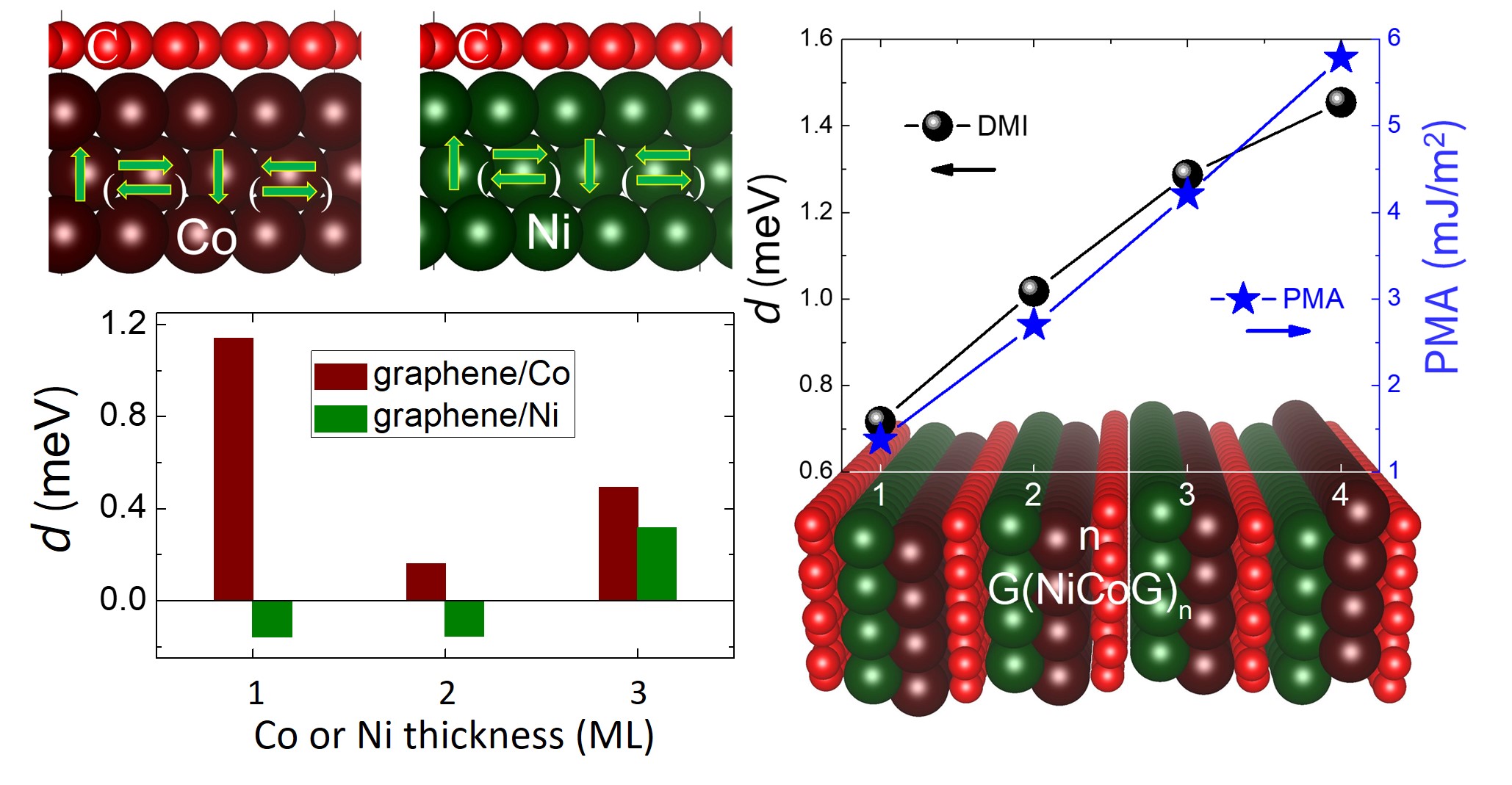Despite being a weak spin–orbit coupling material, graphene demonstrated to induce significant Dzyaloshinskii–Moriya interaction due to the Rashba effect leading to formation of chiral spin textures in adjacent ferromagnet (FM) at graphene/FM interfaces.
First-principles calculations and experiments using spin-polarized electron microscopy show that this graphene-induced Dzyaloshinskii–Moriya interaction can have a similar magnitude to that at interfaces with heavy metals. This work paves a path towards two-dimensional-material-based spin–orbitronics.
The possibility of utilizing the rich spin-dependent properties of graphene has attracted much attention in the pursuit of spintronics advances. The promise of high-speed and low-energy-consumption devices motivates the search for layered structures that stabilize chiral spin textures such as topologically protected skyrmions. Whereas chiral magnetism induced by the interfacial DMI has become an important topic, the DMI at interfaces with graphene was not expected to be significant because, according to the Fert–Levy model, the DMI scales with spin-orbit coupling (SOC) in the material contacting the ferromagnetic metal layer and graphene lacks strong SOC. At the same time, recent observations of enhanced PMA at graphene/FM interfaces suggested that they are unusual: if graphene enhances the PMA at interfaces in the absence of strong SOC, then it is interesting to ask if graphene has similarly strong effects on the DMI, helping thereby to promote this and other two-dimensional (2D) materials for spin–orbitronics. This idea was tested in this work by exploring the interfaces of graphene with cobalt and nickel, where these two ferromagnetic metal elements are chosen for their small lattice mismatch and strong interaction with graphene.
Crystal and spin configurations of graphene-coated Co and Ni films used for DMI calculations and total DMI coefficient as a function of ferromagnetic metal film thickness for graphene/Co (brown) and graphene/Ni (green) slabs (left panel)
Spintec’s theory group in collaboration with colleagues in France, USA and Brazil discovered both from first-principles calculations and from magnetic imaging experiments that a graphene/ferromagnetic metal interface generates significant DMI. The calculated DMI constants the largest DMI can reach up to 1.14 meV per atom for a graphene-coated single atomic layer of Co (see left panel in Fig. above). Experimental measurements of DMI in graphene/Co by means of SPLEEM confirmed these findings. Furthermore, [Co/Ni/graphene]n heterostructures allowing simultaneous enhancement of the DMI and PMA were proposed (right panel in Fig. above). All these findings demonstrate that the graphene-induced DMI should be sufficient to stabilize magnetic chiral spin textures such as skyrmions in ultrathin ferromagnetic metal films attached to graphene.
Team: Theory and Simulation
Collaboration: CNRS/Thales (France); LBNL (USA); UC Davis (USA); CDTN (Brazil); UFMG (Brazil)
Funding: EU Horizon 2020 grant no. 696656 (GRAPHENE FLAGSHIP); ANR ULTRASKY; ANR SOSPIN
Further reading: Significant Dzyaloshinskii–Moriya interaction at graphene–ferromagnet interfaces due to the Rashba effect, H. X. Yang, G. Chen, A. A. C. Cotta, A. T. N’Diaye, S. A. Nikolaev, E. A. Soares, W. A. A. Macedo, K. Liu, A. K. Schmid, A. Fert & M. Chshiev,
Nature Materials 17, 605 (2018). DOI: 10.1038/s41563-018-0079-4
Contact: Mairbek Chshiev





